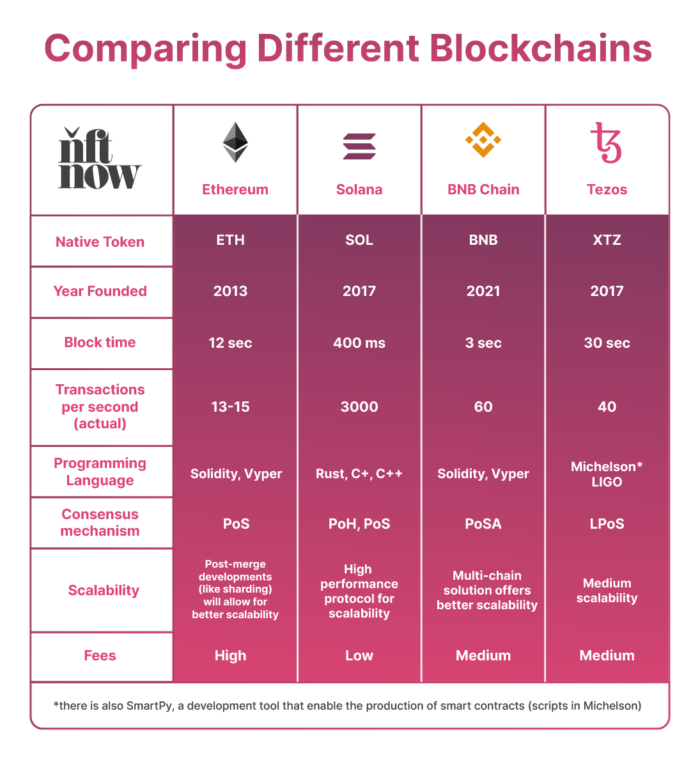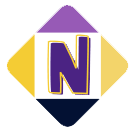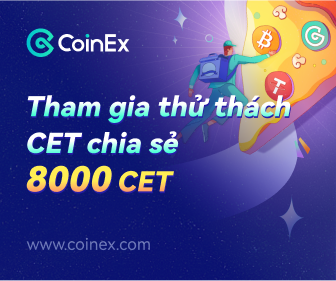As the Web3 ecosystem expands, the future of non-fungible tokens has become even more impossible to predict. While in 2021 it would’ve been possible to make a case for the long-term viability of Ethereum-based (and possibly only Ethereum-based) NFTs, today, Solana, Tezos, and Flow have grown into their roles as major competitors in the space.
Yet, as the market continues to wax and wane, even hardcore supporters of alternative NFT blockchains have begun to falter in their beliefs. As the creator royalties debate drives collectors in the direction of (and then from) blockchains like Solana, another major shift in blockchain dominance seems imminent.
Like a hero waiting in the rafters, Cardano heard the call and seems poised to aid the vulnerable NFT ecosystem. With NFT volume on the chain rising over 300 percent in 2022 Q4 alone, Cardano might be the next hotbed for Web3 culture and tokenized innovation. Here’s what you need to know about the growing Cardano blockchain.
What is the Cardano blockchain?
Cardano was first conceptualized by Charles Hoskinson, a co-founder of the Ethereum blockchain. Hoskinson began the development of Cardano in 2015 before ultimately launching the platform in 2017, positioning the chain as an alternative to Ethereum.
Cardano’s native cryptocurrency is ADA. Despite the blockchain’s growing popularity for NFTs, its crypto ranks around ninth in terms of market cap (as of November 2022). A “decentralized third-generation proof-of-stake blockchain,” according to official documents, the platform evolved out of a scientific philosophy and a research-first-driven approach.

One of the most unique facets of Cardano is that the blockchain is a fully open-source project created to establish fair and resilient infrastructure for both financial and social applications on a global scale. Considering this ambition, the blockchain was designed with security as one of its founding principles.
In contrast to other blockchains like Tezos and Solana, which both preach eco-consciousness as their main discerning factors, Cardano cites scalability and interoperability as two of its most robust features. Similarly, until the fall of 2022, Cardano hadn’t been widely favored as a blockchain for NFTs. Quite the contrary, Cardano’s official language has continued to point to its system design, security, and evolution toward full decentralization as its most auspicious traits.
Without going too deep into the infrastructure of the Cardano blockchain, it’s important to note that Cardano’s roadmap is organized into five eras: Byron, Shelley, Goguen, Basho, and Voltaire. Each era is centered around a set of functionalities to be delivered across multiple code releases, meaning that the blockchain is constantly changing.
You can read more about the Cardano roadmap here. The critical thing to understand (as it pertains to NFTs and Web3 users) is that to foster innovation and bring reliable, secure financial services to all, Cardano is constantly evolving. And as the chain continuously levels up, it’s likely that incentives for creators and collectors to migrate to the chain will become more plentiful.
How does Cardano work?
Akin to Tezos, Cardano runs on a Proof-of-Stake (PoS) consensus mechanism, as opposed to the Proof-of-Work (PoW) mechanisms used by other blockchains. Until recently, Ethereum, the most popular of all NFT blockchains, also ran on PoW, but it switched to a PoS consensus system after the long-awaited merge.
PoW requires computers to compete with one another to solve complex puzzles to add blocks and transactions to the blockchain. It’s one method of getting around the problem of not having a decentralized authority to validate transactions in the network. As such, blockchains that use PoW require a lot of computer power — meaning a lot of energy — to work.

PoS, on the other hand, allows users to stake an amount of their cryptocurrency for the chance to be randomly chosen as a block validator. This mechanism rewards loyalty while reducing the computational work needed to verify blocks and transactions on the blockchain. As PoW (and the sheer amount of energy/crypto required to run it) is often cited in arguments against NFTs, Cardano, a PoS chain, has emerged as yet another robust platform sought out by environmentally-conscious Web3 users.
How to buy and sell crypto on Cardano
You’ll need a Cardano wallet if you’re hoping to trade ADA and collect NFTs on the Cardano blockchain. Much like MetaMask is to Ethereum and Temple Wallet is to Tezos, there are a few wallets that are Cardano-specific that allow users to interact with the blockchain.
While many wallets can be used for storing ADA, the current most popular hot wallets in the NFT space are undoubtedly Nami, Yoroi, and Eternl. The signup process for any of these is significantly easy. But once you’ve secured one, or something similar, you’ll need to stock up on ADA to get involved in the Cardano NFT ecosystem.
Because Cardano’s native token, ADA, is a relatively popular mover in the crypto market, it’s available to buy and sell on nearly every major centralized and decentralized exchange. You can buy ADA using fiat via Coinbase, Binance, eToro, and various other platforms. These centralized exchanges are generally the most user-friendly, so they are best for beginners. But of course, you can also use a decentralized exchange (DEX) like SundaeSwap to obtain some ADA.
Keep in mind, though, as DEXs are decentralized, they aren’t subject to regulation. It’s better to investigate a DEX (or even crypto broker for that matter) first in order to protect yourself. But regardless, before you run off to make a purchase, make sure you read our complete guide to crypto exchanges here for a refresher on how to buy.
How to make and mint a Cardano NFT
Over the years, minting NFTs and creating collections has become easier and more accessible to non-tech-minded users. Cardano is no exception, as the platform has a wealth of info and how-tos to guide creators through the process. Minting NFTs on the Cardano blockchain is about the same as minting on Ethereum or Solana. As previously mentioned, you’ll need to set up a wallet before you begin. You’ll also need to deposit at least a few dollars worth of ADA into your wallet to cover minting and other transaction fees.
The type of NFT you wish to mint will ultimately determine where you will be most successful minting it — so, your next step will be to decide what kind of NFT you want to mint. You’ll also need to consider if you want to create a 1/1 or an edition (multiple copies of the same NFT). See the below video from the official Cardano “Minting NFTs” guide for more general info on this.
If what you’re after is to mint a large-supply NFT collection similar to CryptoPunks or Bored Apes, you might want to consider teaming up with an artist and developer before diving into an undertaking of that magnitude. While many have covered the exact process of minting NFTs on Cardano, you may run into some jargon or commands you don’t recognize, and in these cases, having extra help can be invaluable. Yet, once all is said and done, and you have an asset ready to turn into an NFT, you’ll need to find the right platform to mint on.
Cardano NFT marketplaces
As with other blockchains, there’s a diverse range of places for enthusiasts to create and trade NFTs on Cardano. Although there aren’t as many medium-specific marketplaces (akin to the music and photo NFT platforms of Ethereum), Cardano marketplaces host a wide variety of small-batch to large-scale collections.
Currently, CNFT is likely the largest and most popular marketplace on Cardano. Think of it as the OpenSea for Cardano, as its ecosystem also encompasses Explosif, a Cardano NFT minting platform. On CNFT, creators are empowered to mint everything from avatars to videos, photographs, songs, and more. Similar to Magic Eden, the marketplace even has a launchpad aimed at helping users create, mint, market, and successfully launch projects.
A close second to CNFT is JPG Store. Billed as a carbon-negative marketplace, JPG Store is a contributor to 1% for the Planet, where one percent of the platform’s revenue goes directly towards supporting environmental causes. The marketplace supports environmental causes on the similarly environmentally friendly Cardano blockchain. It also features a launchpad for creators.
Another solid option for Cardano creators and collectors is Tokhun. Initially designed as one of the first Cardano NFT minting platforms, over time, Tokhun evolved into a smart-contract-driven NFT marketplace to provide an intuitive, user-friendly platform. The marketplace is billed as a robust ecosystem where businesses, artists, and collectors alike can mint, buy, sell, and manage NFTs.
Each platform featured above offers straightforward, beginner-friendly minting processes that usually include comprehensive step-by-step instructions. Even if you’ve never minted an NFT before, you won’t have to worry about writing your own smart contract or interacting directly with a network with these marketplaces. Similar to minting on other blockchain-specific marketplaces, the process is about as easy as shopping online.
NFT Projects on Cardano
Better known for its off-kilter community and unique individualistic ethos, Cardano is a treasure trove for avatar and gaming projects. While the blockchain has yet to entice crypto-art heavyweights to join up en masse, some collections on Cardano are starting to accrue sizeable sales volumes, turning the heads of even the most devout Ethereum creators and collectors.
SpaceBuds is one such project making waves on Cardano. Launched in March 2021, the collection features 10,000 space-animal-themed NFTs and was created out of curiosity about Cardano and its technology. SpaceBuds has racked up over 40 million ADA in sales volume to date.
Pavia is another Cardano NFT project that has started to rise to prominence. A metaverse-based project, Pavia is said to be a “singles instance world” made up of 100,000 plots of NFT land. The project is intended to be a utopian virtual world built and ruled by the early settlers and creators who join it. As such, Pavia’s ample supply of metaverse land has helped the project accrue nearly 33 million ADA in sales volume.
Clay Nation may be one of the most unique projects on the Cardano blockchain. Billed as a claymation art and culture project, the collection features 10,000 avatar characters, each created by the random assembly of handcrafted clay traits. Since launch, Clay Nation has expanded outward, introducing metaverse land to the Clayverse ecosystem and collaborating with American rock band Good Charlotte.
As more creators switch over to Cardano, the possibilities of what can be built on this open-source NFT blockchain alternative grow exponentially. Ultimately, we could see a wealth of IP created on Cardano as the blockchain grows to rival even its most established peers.
Source nftnow



